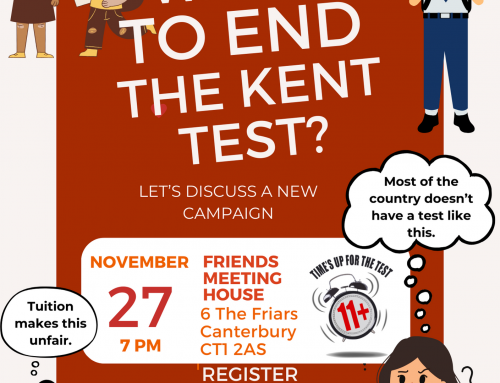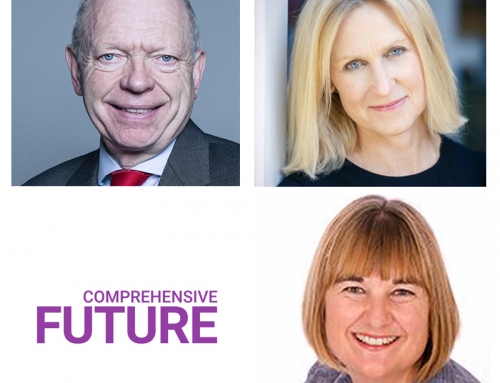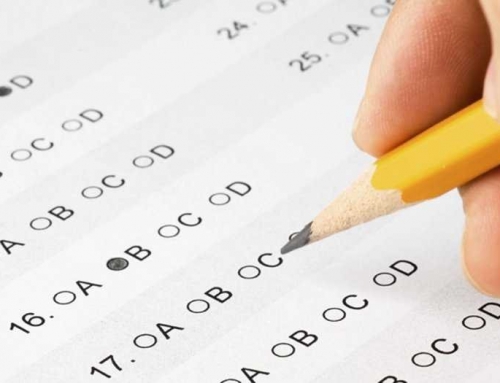Fairness is difficult to define and can change with circumstances, as the American philosopher Michael Sandel argues[1], but its pursuit – especially in the education system – is vitally important as schooling is the way our society socialises future citizens. As well enabling individuals to learn and achieve qualifications, schools are the means by which society reveals its values, transmits its culture and sorts its future roles.
One obvious source of unfairness is the dominance within the English education system of an outmoded notion of ability as an IQ score. Today we understand that ability is not set in stone. It is multi-faceted and can change – as recent research published in the Journal Nature has demonstrated[2]. It has many attributes not just absorbing and recalling knowledge and includes perseverance; stamina and, most crucially, resilience[3].
Fairness is not helped by the promulgation of the idea that doing well at school is independent of children’s social, cultural and economic family backgrounds. Poverty is no excuse for failure but it is certainly related to it. If we compare two children, one with all the advantages from birth of a well-funded life – and even private tutoring – with a child who has none of these, it is obvious which one is going to emerge best from the education system. Astoundingly, due to the amazing idiosyncrasy of human nature, some who have experienced the most hardship will nevertheless succeed. But these are exceptions and we cannot build a system on such exceptions.
I believe it is possible to make the English education system fairer but that would require a number of changes to current and recent government policies. In my view there needs to be:
· fairness in all funding with ministers no longer giving their favoured types of schools large bonuses;
· fairness in how schools are governed with all schools having the same powers and responsibilities;
· fairness in what can be taught with the National Curriculum (reduced from its present size) available to all pupils;
· fairness in the freedom to innovate in both school organisation and pedagogy;
· fairness in inspections so that all schools can be assumed to be at an acceptable level (rather inspectors trying to fine grade them on the basis of unreliable – and very limited – knowledge;
· fairness in assessment – helping as many pupils as possible reach the highest levels rather than seeking artificially to restrict success on the mistaken Kingsley Amis principle that “more will mean worse”[4];
· fairness in the allocation of pupils to schools so that all schools recruit a ‘balanced intake’ – pupils who find learning easy and those who do not; those coming from relatively advantaged social, cultural and economic family backgrounds and their opposites.
Achieving such a balanced intake is perhaps the trickiest issue in the English system because of our past history, our tradition of private education, agreements reached with religious authorities, the pattern of urban housing and our exaggerated interest in social class and race. Bodies such as Comprehensive future (CF) and the Campaign for State Education (CASE) are committed to remedying this situation by promoting a genuinely fair admissions policy so that all schools would receive balanced intakes. This means schools having pupils who find learning easy as well as those who do not, those who come from both relatively advantaged social, cultural and economic family backgrounds and their opposites and those from a wide mix of ethnic groups, faiths and abilities. – But, as I argue in my book Education under siege[5], the reality is different. While some English primary schools and some secondary schools have a fair range of pupils, many others do not.
Some seven per cent of pupils, from families able to afford school fees, attend private schools. The result is that, as reported by the 2011 British Social Attitudes Survey, regardless of how good these schools might be: they ‘perpetuate a form of separate development in Britain’[6].
A small, but significant, number of pupils attend the 163 state grammar schools left over from the tripartite era of education. Such schools used to form the top tier (with much greater status and resources) above technical and secondary modern schools. They continue to select by ability, recruiting those deemed most capable in tests.
Some state schools also manage to over-recruit talented pupils. This gives them an advantage in the league tables. And some – though not all – faith schools recruit more than their fair share of talented pupils[7].
As a result, many young people grow up mixing only with those from a particular social class, ethnic, faith or ability group with all the limitations that this entails. Schools can make a difference – as I have been arguing for 30 years [8]– but they cannot overcome the problems of unbalanced intakes. In the words of my former colleague – Basil Bernstein – “Education cannot compensate for society”[9]. England has some excellent teachers – the best teaching I have seen has been in this country – but its education system is exceedingly muddled. It could learn a lot from the study of fairer countries.
How could this be changed so that all secondary schools receive a fair intake and all pupils have a fair chance of success? Of course, schools would still differ to a certain extent – the research evidence illustrates how particular schools can exceed normal expectations – but the current large differences in the intake to schools would be much reduced.
I like the argument that children should attend their local school. The problem is that housing patterns mean that those from poor areas and those from more advantaged ones usually go to different schools. Bussing, banding and what is termed ‘random allocation’ appear to be the only possible ways to achieving more of a mix.
Bussing was tried extensively in United States in the 1960s following the US Supreme Court’s insistence on the desegregation of schools[10]. It is generally deemed to have been unsuccessful.
Banding requires pupils to be assigned to an ability band on the basis of their primary schooling. Secondary schools then admit set proportions from each band. Its major defect is that it depends on the public labelling of children. Such labelling is frequently unreliable. Despite this unreliability, labelling has a powerful psychological impact on pupils. It leads to an inevitable downgrading of expectations for many (which is why it is not permitted in Finland[11]).
I believe that the only realistic way to achieve balanced intakes for secondary schools in urban areas is through random allocation. Such a system would mean that all secondary schools receive a mix of pupils – able and with difficulties, rich and poor, white and from ethnic minorities. In other words each school would have an intellectually, socially and ethnically mixed population. Paradoxically, it would make league tables (which I dislike intensely) fairer. Schools, for the first time, would be comparable and like could be compared with like. More positively, parents could relax, knowing that their children could gain a good education whichever school they attended. This would greatly relieve the stress currently felt by them and their children.
Like any system, random allocation would not be perfect. Some parents would resent their children not automatically getting a place in their nearest school (and estate agents would no longer be able to use a powerful marketing tool). Furthermore, the title of the process – random allocation – sounds inhuman: being selected by a robot rather than a caring professional. Yet it is just this objective element that makes the admissions system fair. Perhaps the process should be re-titled – ‘an equal chance admissions system’.
Exceptions would have to be made for siblings so that families could stay together. Large areas would also have to be subdivided to ensure that no pupil had an unreasonable journey and care would be needed to ensure that each sub area included a range of different housing patterns.
I accept that my argument will be hard to win but I believe that adopting such a system of pupil allocation would improve standards and greatly improve many pupils’ opportunities as well as making our society fairer. It will take both time – and some courageous politicians – to convince people. But change is successfully embraced when a sufficient number begin to see its advantage. Who would have thought – 20 years ago – that smoking would ever be banned from public areas?
About the author
Professor Peter Mortimore has been a teacher, researcher and administrator in education for 50 years. Most recently he was Professor of Education at the University of Southern Denmark, having previously been Director of the Institute of Education. University of London. He has carried out numerous studies of school effectiveness and undertaken reviews of Nordic education systems. He was an education columnist for the Guardian for four years. His latest book Education under siege; why there is a better alternative was published in September 2013.
[1] Sandel. M. Prospect Magazine interview with Michael Sandel on Justice. http://www.prospectmagazine.co.uk/magazine/interview-michael-sandel-on-justice-bbc4-justice-citizens-guide/#.UpM5esTxpvA.
[2] Ramsden, S., Richardson, F., Josse, G., Thomas, M., Ellis, C., Shakeshaft, C., Seghier, M. and Price, C. (2011) ‘Verbal and non-verbal intelligence changes in the teenage brain’, Nature, published on line 19 October 2011.
[3] See Mortimore, P. (2013) “Peoples’ ability is made up of their intellectual, social, emotional, physical and artistic capabilities, skill in using luck, capacity for hard work, resilience and sense of strategy”.
[4] Leader, Z. (2000) (ed) The letters of Kingsley Amis, London: Harper Collins.
[5] Mortimore, P. (2013) Education under siege: why there is a better alternative. Bristol: Policy Press.
[6] National Centre for Social Research (2011) British Social Attitudes Survey 28 London: National Centre for Social Research.
[7] Allen, R. and West, A. (2011) ‘Why do faith secondary schools have advantaged intakes? The relative importance of neighbourhood characteristics, social background and religious identification amongst parents’, British Educational Research Journal, 37, 4, 691–712.
[8] Rutter, M., Maughan, B., Mortimore, P. and Ouston, J. (1979) Fifteen thousand hours: Secondary schools and their effects on children, London: Open Books.; Mortimore, P., Sammons, P., Stoll, L., Lewis, D. and Ecob, R. (1988) School matters: The junior years, London: Paul Chapman Publishing.; Sammons, P. (2007) School effectiveness and equity – making connections: A literature review, London: Council for British Teachers Education Trust.
[9] Bernstein, B. (1970) ‘Education cannot compensate for society.’ New Society, 387, 344-7.
[10] Kluger, R. (1975) Simple justice: the history of Brown v Board of Education and Black America’s struggle for equality, New York: Harper and Row.
[11] Laukkanen. R. Finnish (2006) National Board of Education. Paper presented at the conference Educational Systems and the Challenge of Improving Results. University of Lausanne. Switzerland.




